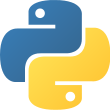 Language
Language
- Python 2
 Reading time
Reading time
- Approximately 10 days
 What you will learn
What you will learn
- Advanced Python Concepts
 Author
Author
- Gennadiy Zlobin
 Published
Published
- 11 years, 7 months ago
Written for intermediate Python programmers, this excellent tutorial will help streamline your work through the use of Design Patterns. You'll learn through example and clear explanations to expand your know-how and speed up your output.
Overview
- Explore the Model-View-Controller pattern and learn how to build a URL shortening service
- All design patterns use a real-world example that can be modified and applied in your software
- No unnecessary theory! The book consists of only the fundamental knowledge that you need to know
In Detail
Design pattern is a well-known approach to solve some specific problems which each software developer comes across during his work. Design patterns capture higher-level constructs that commonly appear in programs. If you know how to implement the design pattern in one language, typically you will be able to port and use it in another object-oriented programming language.
The choice of implementation language affects the use of design patterns. Naturally, some languages are more applicable for certain tasks than others. Each language has its own set of strengths and weaknesses. In this book, we introduce some of the better known design patterns in Python. You will learn when and how to use the design patterns, and implement a real-world example which you can run and examine by yourself.
You will start with one of the most popular software architecture patterns which is the Model- View-Controller pattern. Then you will move on to learn about two creational design patterns which are Singleton and Factory, and two structural patterns which are Facade and Proxy. Finally, the book also explains three behavioural patterns which are Command, Observer, and Template.
What you will learn from this book
- Create different implementations of the same algorithm with the least modifications
- Implement the publisher-subscriber pattern
- Create an object when only one instance of it is needed
- Create a simple interface using the Facade design pattern
- Increase the functionality while leaving the interface unchanged
Approach
This book takes a tutorial-based and user-friendly approach to covering Python design patterns. Its concise presentation means that in a short space of time, you will get a good introduction to various design patterns.
Who this book is written for
If you are an intermediate level Python user, this book is for you. Prior knowledge of Python programming is essential. Some knowledge of UML is also required to understand the UML diagrams which are used to describe some design patterns.
- Works/Worked at Facebook
